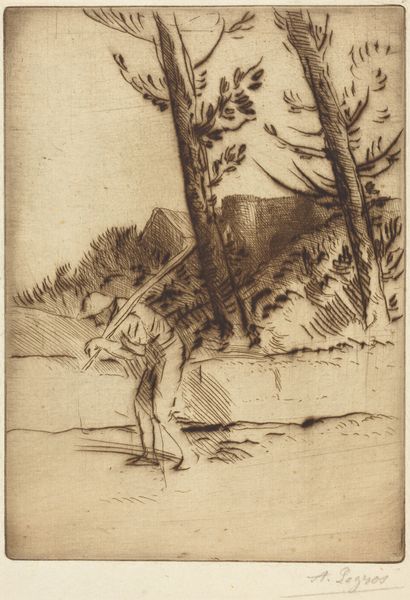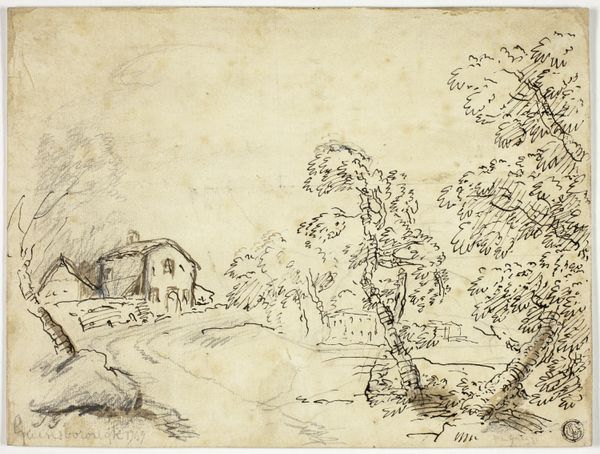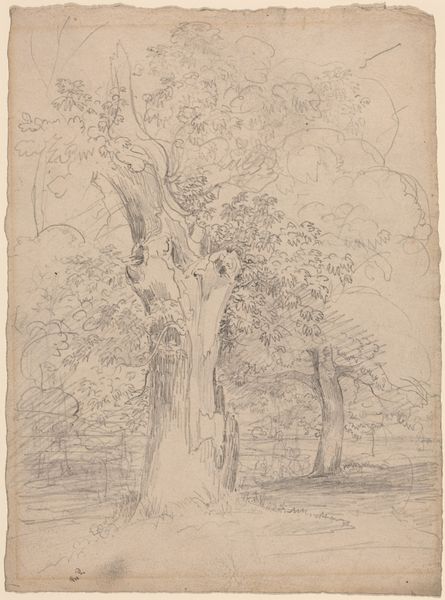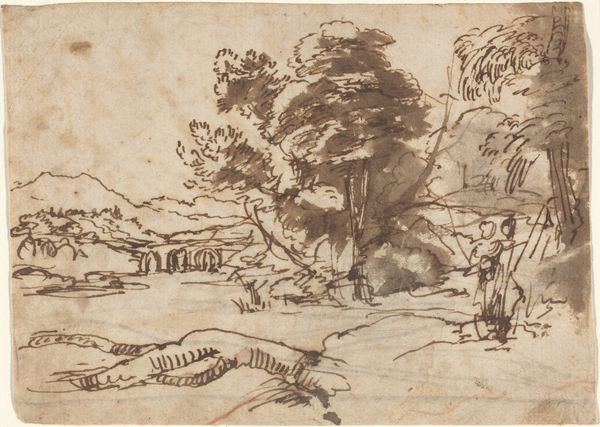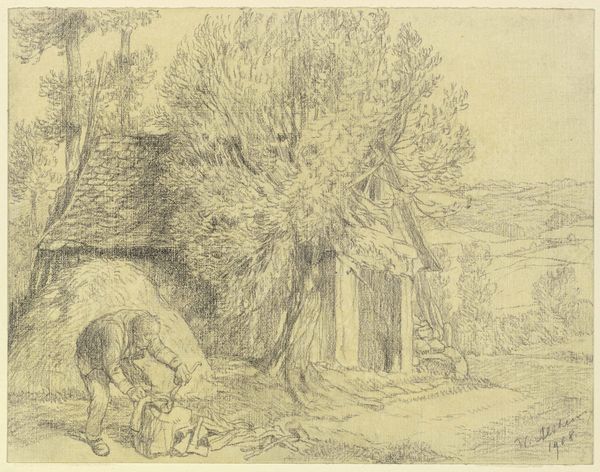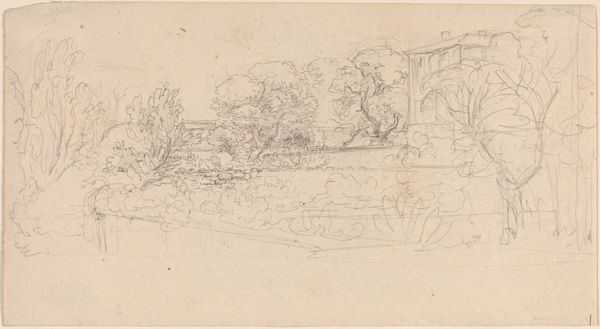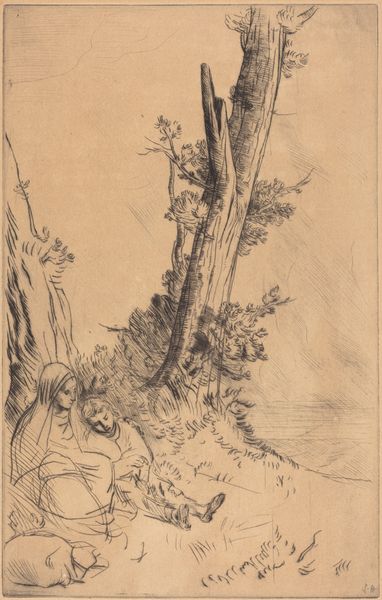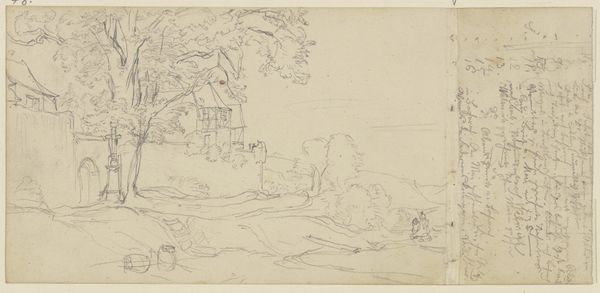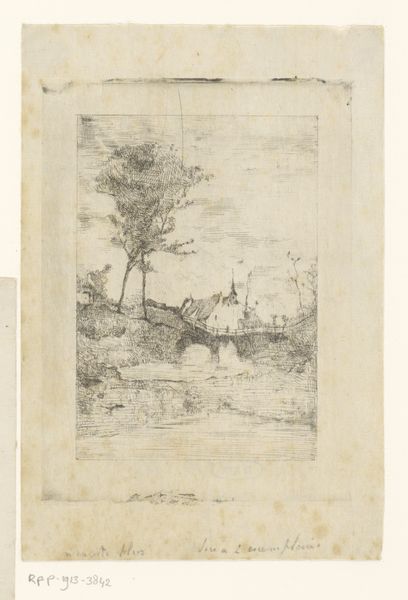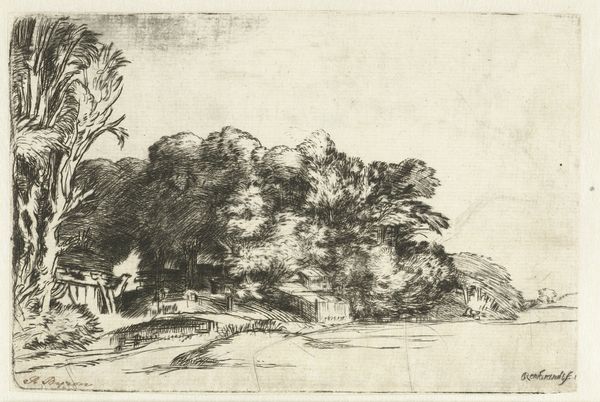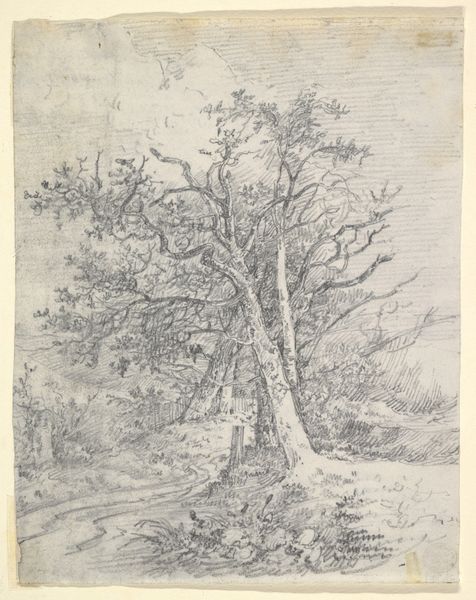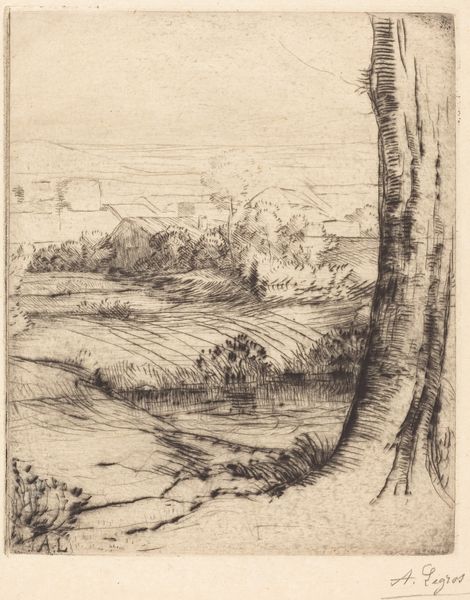
drawing, ink
#
drawing
#
venetian-painting
#
ink drawing
#
dog
#
landscape
#
figuration
#
11_renaissance
#
ink
#
men
#
genre-painting
Dimensions: 9 15/16 x 7 7/8 in. (25.3 x 20 cm)
Copyright: Public Domain
Curator: At first glance, this drawing, “Landscape with a Shepherd in Repose," feels like a brief moment captured in time—almost dreamlike with its delicate ink strokes. Editor: Yes, a strangely compelling tranquility emanates from this work; a certain weariness too. Curator: It's attributed to an artist of the Venetian School, sometime between 1536 and 1570. Notice the shepherd slumbering beneath a rather striking tree. It reminds me of ancient bucolic scenes, and perhaps nods to classical ideals of simple, rural life. Even the dog seems lost in his own thoughts. Editor: Indeed, that shepherd embodies the trope of rural idyll. Yet, it is tempting to delve deeper. I wonder, was this “idyll” available to all or a carefully constructed image masking societal inequities? Consider the context—who owned the land? Who truly profited from this landscape? The reality for many shepherds likely involved unrelenting hardship. Curator: It's a fair point; we risk romanticizing labor if we fail to account for such realities. The recurring figure of the shepherd throughout art history certainly suggests a cultural memory around human ties to the land. There's a timeless quality to the symbolism; shepherd as guide, guardian, wanderer. Editor: Right. That archetype has undoubtedly served those in power—projecting stability even when it was not truly there. How do we contend with art’s frequent complicity in propagating idealized or, indeed, misleading versions of society? This simple scene actually encapsulates huge socioeconomic issues. Curator: Art becomes a space to contemplate those very tensions, I suppose. This drawing allows us, perhaps, to better contemplate the distance between representation and the complex world in which such artworks existed. Editor: Ultimately, by bringing artworks like this into dialogue with critical and historical perspectives, we open avenues to interrogate power dynamics embedded within these pastoral fantasies.
Comments
No comments
Be the first to comment and join the conversation on the ultimate creative platform.

